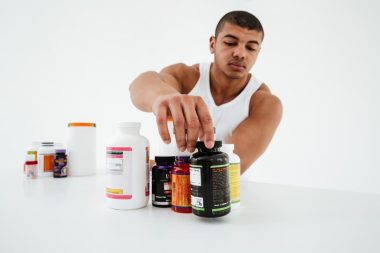As the opioid crisis rages on in the United States, drug use from other substances is often overlooked. For example, while we may hear about performance-enhancing drugs on the news, we don’t hear much about how they may be being used by close friends or loved ones and the harmful consequences associated with them.
Performance-enhancing drugs, or PEDs, can be tempting for athletes to use as they can be a shortcut for improving athletic ability and performance. PED use is widespread, in fact, according to the Mayo Clinic, about five percent of teenagers use steroids to increase muscle mass.
Due to the high use of these types of drugs, it is important to learn more about the negative health consequences associated with these types of substances and how they affect the body.
What Are PEDs?
Almost everyone is familiar with the term performance-enhancing drugs or PEDs from famous athletes being busted and suspended for their use of these substances. However, some may not know exactly how they work or what specific PEDs there are.
Performance-enhancing drugs all work in different ways depending on which drug is used. For instance some work by boosting the level of testosterone in the body, increasing heart rate, stimulating the growth of muscles, and more. While these may help with athletic performance in small bursts, the use of these substances can also lead to numerous health consequences.
Common Types of PEDs
There is a long list of PEDs that athletes have used to help give them an upper hand in their respective sports. Some of the most common forms of PEDs include:
Anabolic Steroids – Anabolic steroids are man-made substances that are related to male sex hormones. Doctors will sometimes use anabolic steroids to treat some hormone problems in men, delayed puberty, and muscle loss from certain diseases. Bodybuilders and athletes will use these types of PEDs to build muscles and improve athletic performance.
Androstenedione – Androstenedione is a hormone that is produced by the adrenal glands, ovaries, and testes that is available legally by prescription in the United States. Manufacturers and some bodybuilding publications have touted androstenedione’s ability to allow athletes to train harder and recover more quickly. However, scientific studies refute these claims and say that the PED doesn’t increase testosterone and muscles don’t get stronger with the use of androstenedione.
Creatine – Creatine is a chemical that is found in the body, mostly in the muscles but also in the brain. Creatine is most commonly used for improving exercise performance and increasing muscle mass in athletes. Creatine is generally safe but if taken for a long period of time may result in some problems and can lead to issues if you already deal with health risks like kidney disease and Parkinson’s disease.
Risks Of PEDs
The use of PEDs among athletes, and especially younger athletes, is a prevalent problem. They are used to synthetically produce different versions of testosterone. Again, they are used to help promote the growth of muscles and enhance athletic performance. However, there are risks and problems associated with using PEDs such as steroids. These can lead to issues such as stunted growth, organ damage, acne, heightened blood pressure, mood swings, aggression, depression, and more.
There are a number of long-term health effects and problems associated with using performance-enhancing drugs such as anabolic steroids. Some of these issues may even end up being permanent. For example, some long- term health problems that can arise from using anabolic steroids include kidney problems or failure, liver damage, increased blood clots, shrinking testicles and development of breasts in men and growth of facial hair and a deepened voice in women.
Other possible effects include:
- Enlarged heart
- Stunted growth in teens
- Increased risk for prostate cancer
- Baldness and more
While long-term effects of PEDs haven’t been studied extensively, short-term benefits of the drugs are likely not worth the many risks associated with them.
Substance Abuse and Addiction
While anabolic steroids do not cause the same high that other drugs may cause, they can still lead to substance use disorder. This occurs when a person continues to misuse steroids even when they are dealing with serious consequences from doing so. People may continue to misuse steroid steroid despite issues such as physical problems, high costs, and negative effects on relationships. Continuing to use despite these issues are signs of substance abuse and addiction. According to the National Institute on Drug Abuse, research has found that some steroid users turn to other drugs such as opioid to help with sleep problems and irritability brought on by steroids.
While the use of PEDs doesn’t always lead to addiction, there are still a number of problems associated with even short-term use of PEDs. It is important to be aware of these issues and seek help if you or a loved one are using performance-enhancing drugs.
About the Author
Matthew Boyle is the Chief Operating Officer of Landmark Recovery, an Indiana treatment center. He has been working in the healthcare space for 7 years with a new emphasis on recovery. Before his ventures into healthcare, Matthew graduated from Duke University in 2011 Summa Cum Laude with a Bachelor of Arts degree. After Duke Matthew went on to work for the Boston Consulting Group before he realized his true passion lies within Recovery. His vision is to save a million lives in 100 years with a unique approach to recovery that creates a supportive environment through trust, treatment, and intervention.








Reply